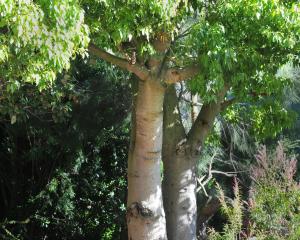
A long flowering period, a food source for birds, bees and butterflies, a good hedging plant in subtropical climates and its soft scent are all noteworthy characteristics, but there are also some unfavourable characteristics, including it’s fruit (although much-loved by birds they are poisonous to us) and the fact that it has been registered as an invasive species in many parts of Australia.
Duranta erecta is from the tropical parts of South America and Mexico and can be grown as a tropical or subtropical. In cooler climates, such as Dunedin’s temperate one, it needs winter protection in a glass house or conservatory. This also has the benefit of stopping it becoming invasive.
Grown as a multibranching shrub or small tree up to 6m, some plants have long sharp spines on the stems while others have none. Fortunately, the one growing in the central house of the Dunedin Botanic Garden Winter Garden glasshouse is spineless.
The small lavender-blue flowers have a faint vanilla scent and are arranged in clusters at the end of the branches then followed by bunches of golden yellow-orange fruits. The stems tend to have a drooping or arching habit.
Generally fairly pest-free, it can still get hit by spider mite or mealy bugs in summer. This can usually be controlled with a blast from the hose or with a horticultural soap spray.
- Stephen Bishop is curator of the winter garden glasshouse at Dunedin Botanic Garden.











